
At Pampa Camarones we are committed to respecting and preserving archaeological riches, carrying out actions to care for the cultural heritage of the community. We work closely with local authorities to ensure that areas of archaeological interest are properly identified and protected
Video
Minera Pampa Camarones has been an ambassador of the Chinchorro culture since 2021. This museum hall corresponds to one of the measures of the Pampa Camarones SpA Environmental Repair Program, in the Arica and Parinacota Region, which indicates in its point No. 2 the Enabling of an exhibition hall or interpretation room, a measure fully implemented and possible to visit in the town of Cuyo, Arica and Parinacota Region.
This museum project allows to delve into knowledge and contribute to the dissemination of the Chinchorro Culture in the Region, with a series of exhibition panels that relate aspects of the life of this culture and the production chain of the elaboration of stone elements, and how these elements are part of the life of populations that inhabited the area in ancient times.

Documentary video
Los Primeros Mineros del Desierto
7 thousand years ago, groups of hunters and gatherers belonging to the Chinchorro Culture left their mark on the territory that today is located in Pampa Camarones
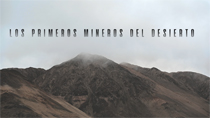
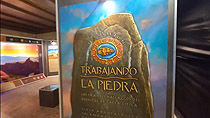
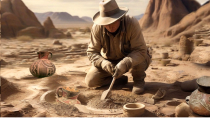
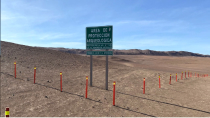
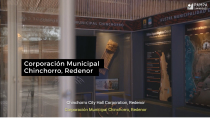
Pampa Camarones excavation process

The Salamanqueja 12-13 site corresponds to an extensive area of lithic material (silica) supply. Studies to date indicate that during their stay in the area, the human groups that inhabited this space left evidence of the roughing of silica nodules recognized today as lithic carving events. To generate this roughing, a tool called a percussion hammer was needed, which is repeatedly found associated with this type of records.
In 2013, the National Monuments Council through its ORD N° 2497-2013 authorized the intervention of the site through surface collection.
The images show the methodological process of surface collection, for the recovery of archaeological elements which will later be analyzed in the laboratory.
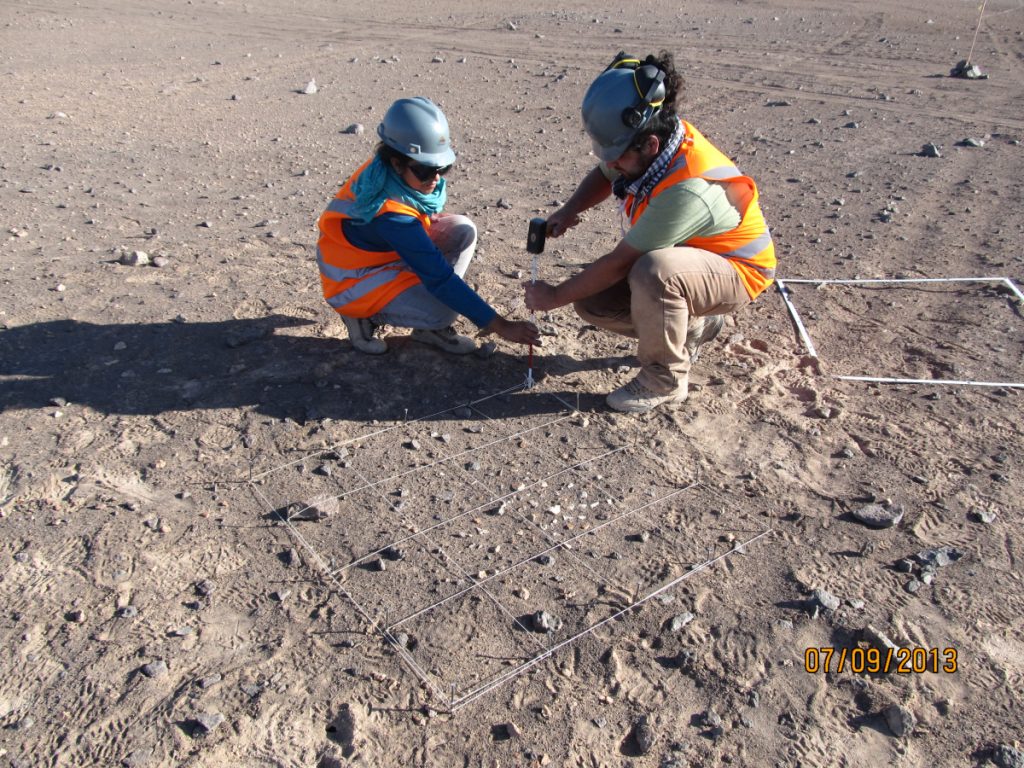
Initial grid
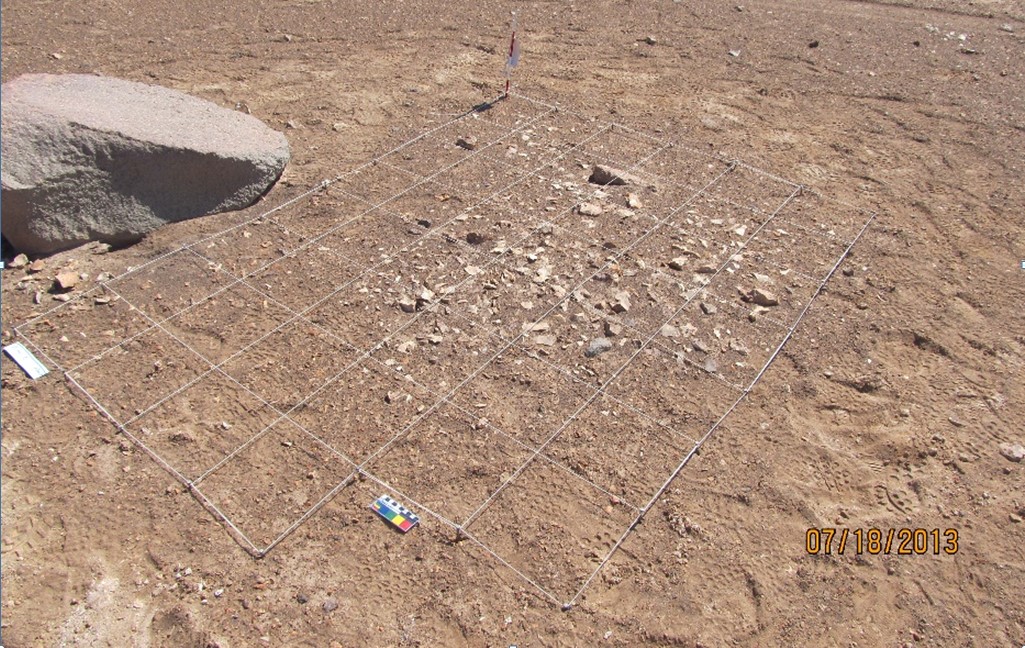
Initial grid
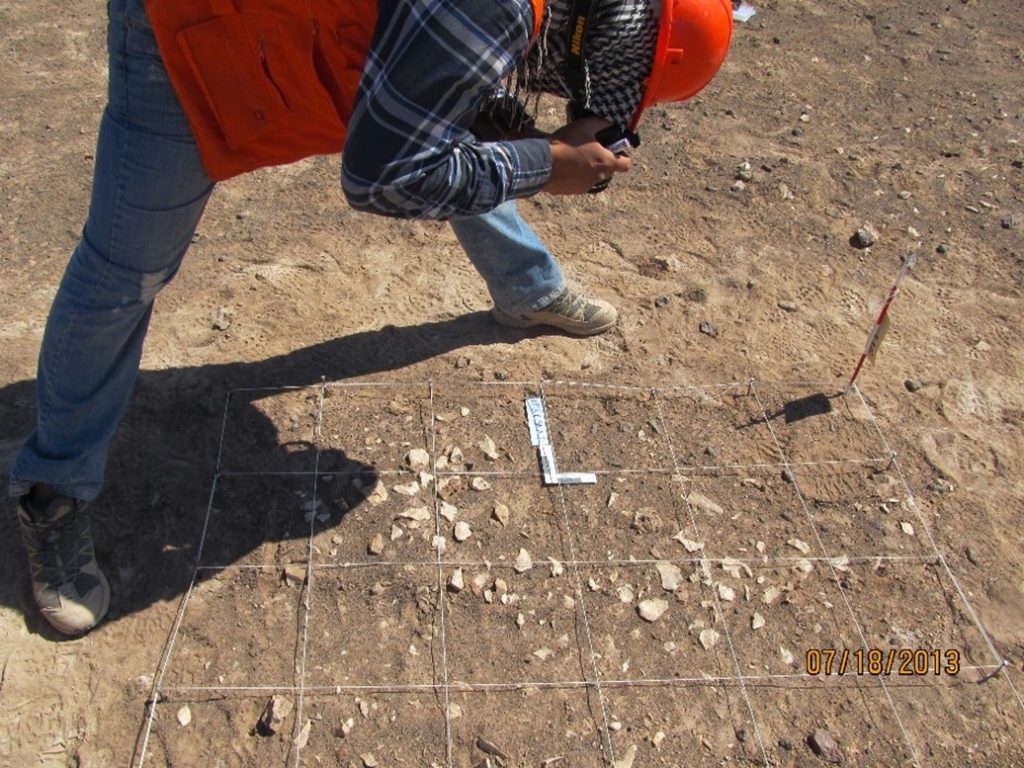
Photographic record
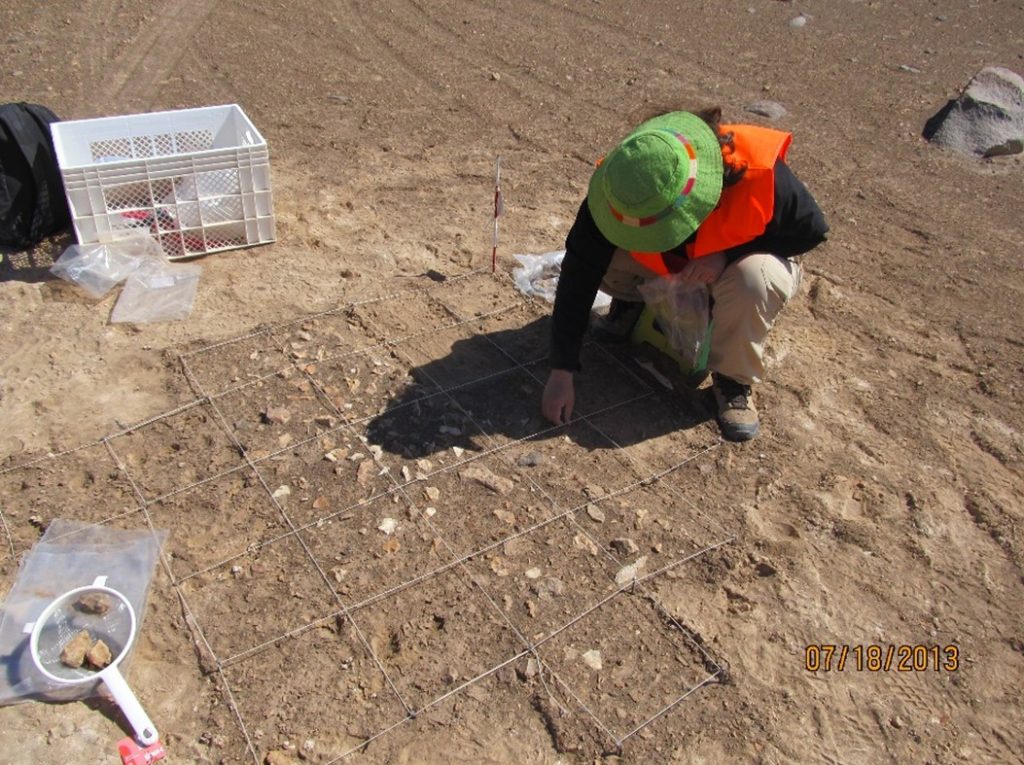
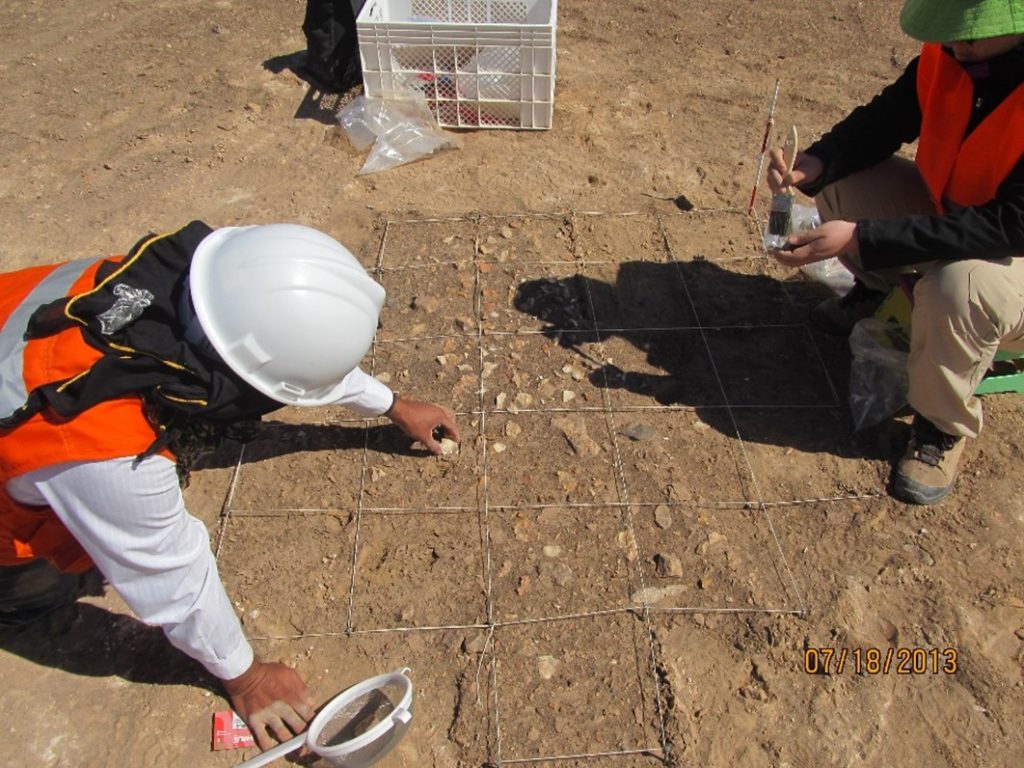
Surface harvesting
Due to the characteristics of the sectors called Tambo 1 and Tambo 2 at the Salamanqueja 12-13 site, it has been considered to keep these areas as intact as possible. In both sectors there is a set of carving events associated with lithic hammers and simple structures as windbreaks to protect against the surrounding wind. These characteristics preserve a way of life that occurred centuries or perhaps millennia ago, which is why it has been considered to keep this evidence in situ.
Mitigation measures for protection (signposting and perimeter fencing) in the Tambo 1 and 2 sector, within the Salamanqueja 12-13 archaeological site.
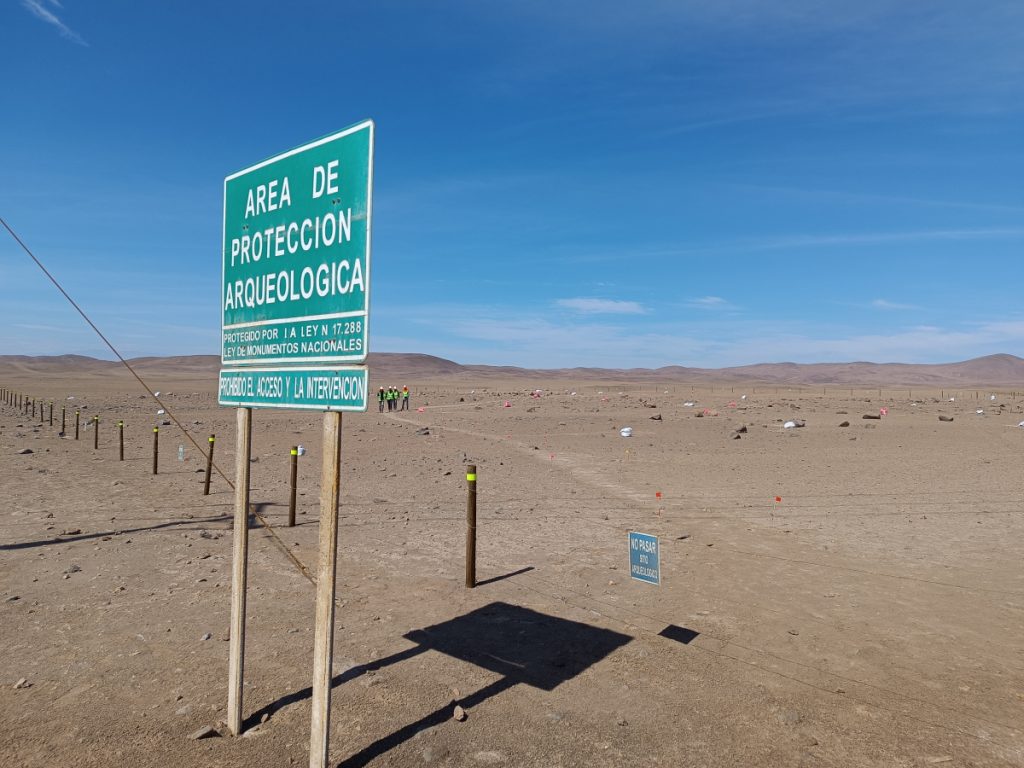
Tambo 1
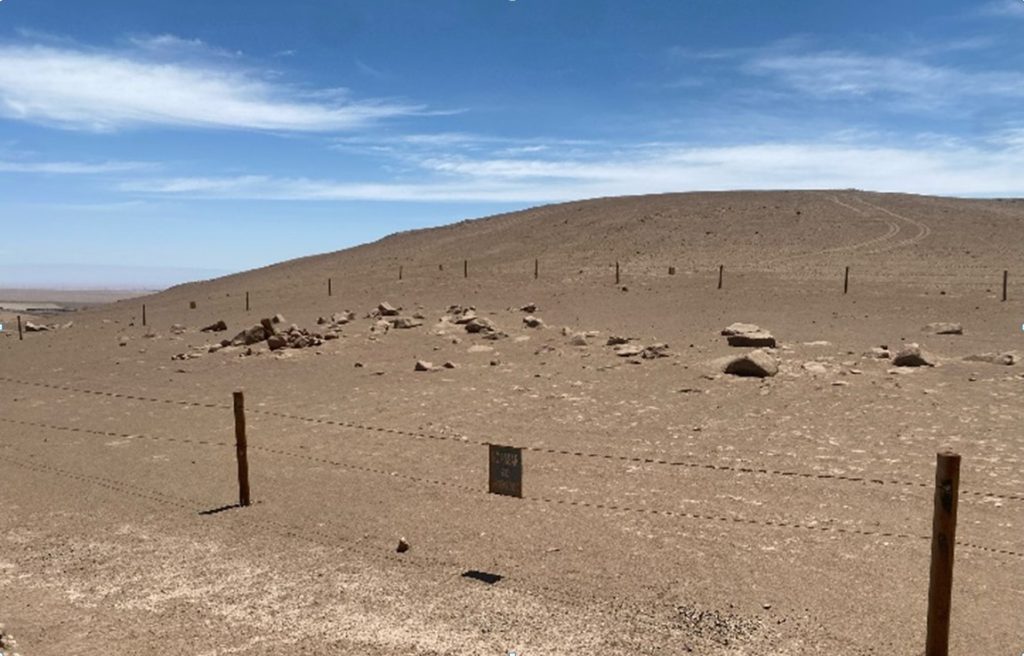
Tambo 2
In both sectors, a research process has been carried out through the archaeological characterization of both tambos. The activity begins with the visit of the professional archaeologists Juan Chacama, Mauricio Navarro and the conservator Mariela Santos. Later, and in accordance with the authorization through ORD CMN N°0875-2023, the test pits are excavated using archaeological methodology as shown below:
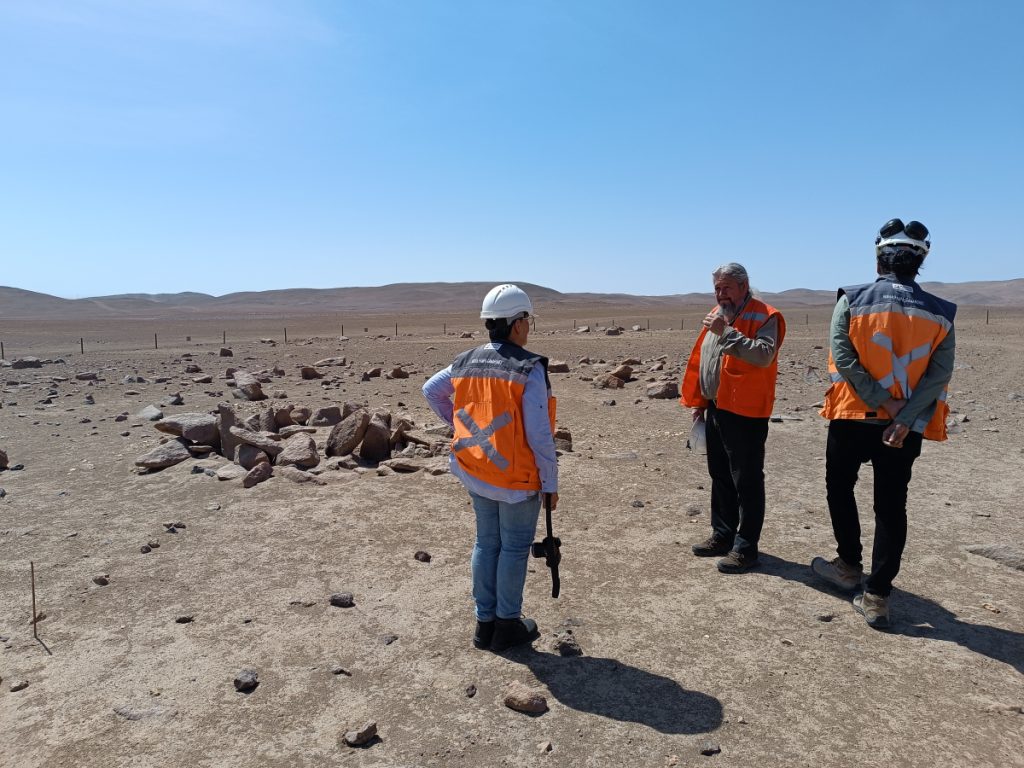
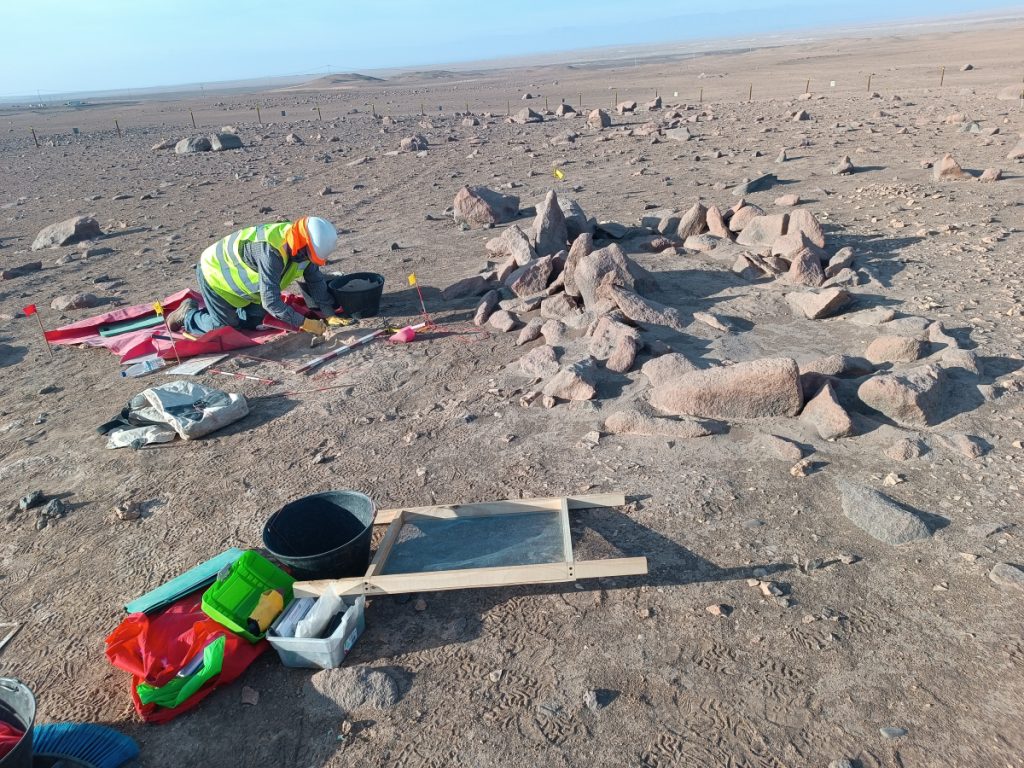
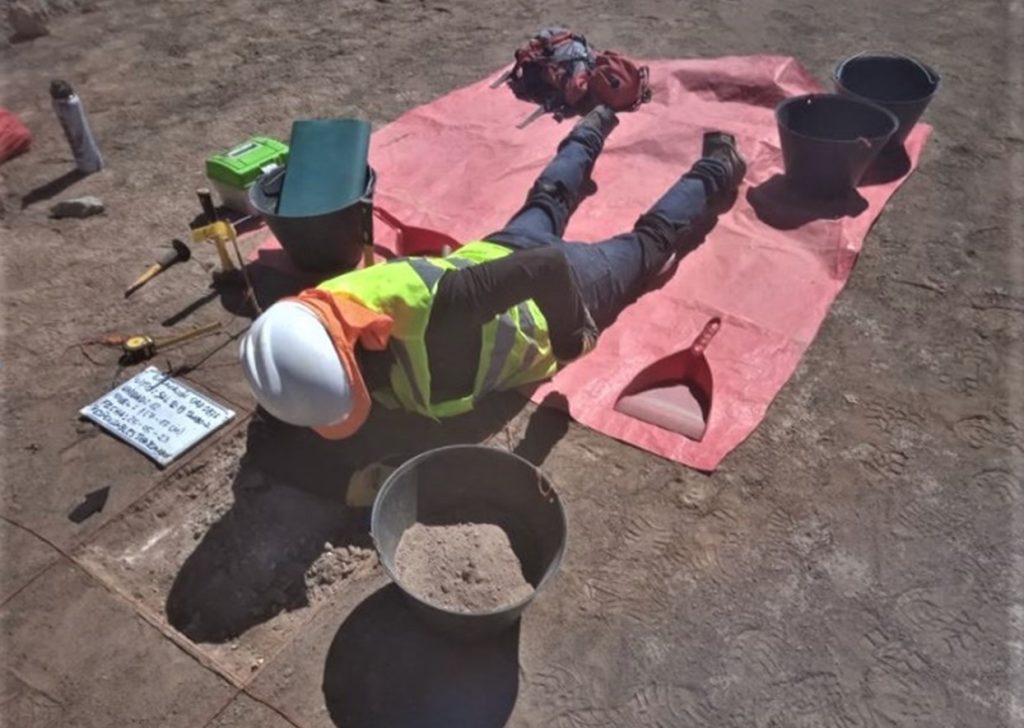
Due to the characteristics of the sector called Tambo 3 at the Salamanqueja 14a site, it has been considered to keep this area as intact as possible. In the sector there is a set of carving events associated with lithic hammers and a simple central structure as a windbreak to protect against the surrounding wind. These characteristics preserve a way of life that occurred centuries or perhaps millennia ago, which is why it has been considered to keep this evidence in situ.
Image of the central structure as a windbreak, which presents carving events and lithic hammers inside and outside on the surface.
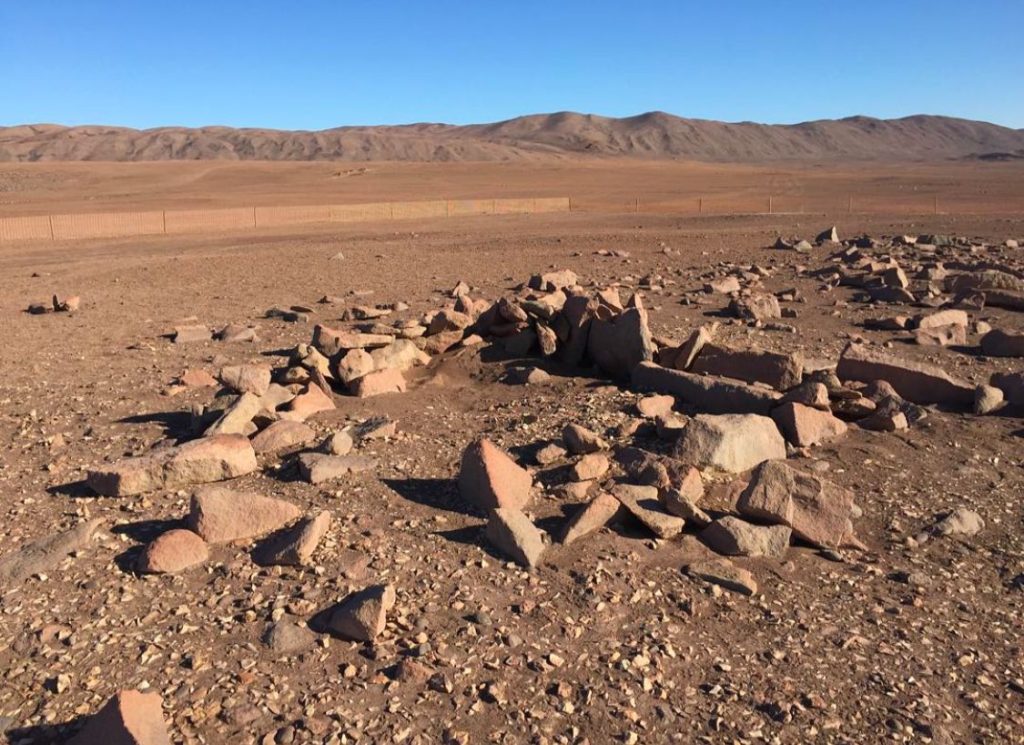
Mitigation protection measures (signaling and perimeter fencing) for the Tambo 3 sector, within the Salamanqueja 14a archaeological site.
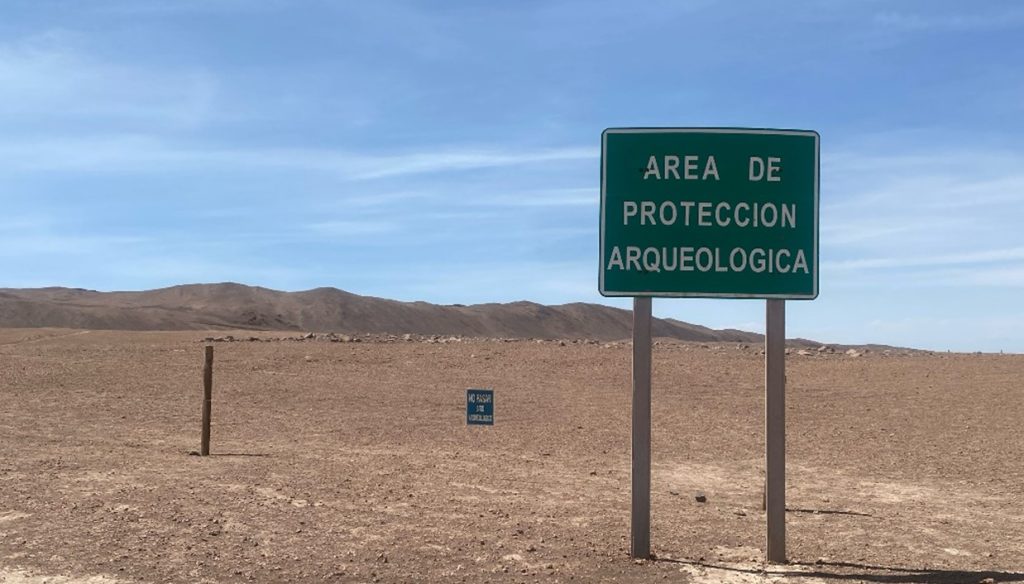
Images from 2013, when a team of professionals led by archaeologist Juan Chacama Rodríguez visited the Tambo 3 sector.
Promotional material

Information material delivered to workers at Minera Pampa Camarones, showing the archaeological heritage present in the mining operation, both at the Cathode Plant and at the Salamanqueja Mine, the exclusion areas, protection measures and ways to proceed in the event of unforeseen findings or in the event of intervention in protected areas.
To download the posters in PDF format, click on the corresponding image.
Triptychs
Among the commitments that Minera Pampa Camarones maintains with the archaeological component in the mining operation are to instruct, protect and safeguard, this is carried out through mitigation measures, aimed at minimizing the impacts of the works or activities of a project on archaeological monuments. These can be prevention or protection (Archaeological Procedure Guide CMN 2020:5).
Among the prevention measures is the quarterly monitoring of the protection measures within the mining project, semi-annual monitoring to see the state of conservation of the components of the registered sites and the holding of talks to the personnel of the site, which allows the community and workers to be instructed on the archaeological cultural heritage of the project site area.
Among the protection measures is being able to safeguard and protect the different exclusion areas in order to conserve said areas for current or future study.
The Salamanqueja 12-13 site corresponds to a large 198 ha deposit with 918 components inside, mainly associated with carving events (yellow site). This was discovered during 2011-2012 during archaeological prospecting work for the DIA that gave rise to this mining project. The site corresponds to a large quarry for supplying lithic material used for the manufacture of tools and utensils. It is worth mentioning that it corresponds to a site for supplying lithic material in which the pieces are not finished, due to the absence of finished elements, which are presumed to have been finished in their base camps.
To extract the raw material necessary for the production of lithic tools, as can be seen in the image (lower left), a core, a hammer and the presence of flakes are needed, all elements visible in this large archaeological site.
In the event that the aforementioned archaeological sectors are affected, the Archaeological Management Plan includes a procedure for possible damage to protected areas, with immediate action, an evaluation and delivery of documentation to the evaluating entity CMN.
Finally, information is provided on the contingency plan for unforeseen findings, which corresponds to the actions that must be carried out in the event of an unexpected discovery of archaeological remains within the framework of any work or activity. In the event of this fact, the procedure must be followed in accordance with the provisions of Art. 26° and 27 of Law No. 17,288 on National Monuments and Article No. 23 of DS No. 484 of 1990, that is, immediately notify the CMN (Archaeological Procedure Guide CMN 2020:4)
Minera Pampa Camarones has within its mining properties the Salamanqueja Mine and the Cathode Plant. In the Salamanqueja Mine sector, the exclusion areas can be seen on the sheet (top right). This measure refers to excluding within the project work, areas that allow the protection of one or more sites that may be interrelated. (Archaeological Procedure Guide CMN 2020: 4). Thus, the following sectors are visible in the mine area: Salamanqueja 1, Salamanqueja 2, Salamanqueja 3, Salamanqueja 4, Salamanqueja 11 and Ceramic Find. All of these sectors currently have protection measures such as fencing and signage (visible in the green sign at the bottom right). The finds correspond mainly to stone carving waste, structures and ceramic elements.
Minera Pampa Camarones has within its mining assets the Salamanqueja Mine and the Cathode Plant. In the Cathode Plant sector, the exclusion areas can be seen on the sheet (top right). This measure refers to excluding within the project work, areas that allow the protection of one or more sites that may be interrelated. (Archaeological Procedure Guide CMN 2020: 4). Thus, a large archaeological site in yellow called Salamanqueja 12-13 is visible, corresponding to 198 ha with 918 components inside, mainly associated with carving events. Within the archaeological site and this sector of the mining project, there are the following exclusion areas: North Area, East Area, Polygon 1, Polygon 2, Tambo 1, Tambo 2 and South Area. All of these sectors currently have protection measures such as fencing and signage (visible in the green sign at the bottom right). The findings correspond mainly to stone carving waste and structures.
Museographic area (64 m2)
A museographic room was created in the cultural center of the town of Cuya in the commune of Camarones, Arica and Parinacota Region, in which the Salamanqueja 12-13 site, its components and type of evidence are exhibited.
The panels in summary highlight the value of stone in pre-Hispanic societies and how it allowed the development of tools in lithic material through its carving. Lithic carving by percussion is what is evidenced in the Salamanqueja 12-13 site, which constitutes a large quarry for supplying lithic material, during the Archaic period in northern Chile (ca. 8,000 – 4,000 B.P.) associated with the Chinchorro culture.
It is located inside the Chinchorro Cultural Space, and is adjacent to the Municipality of Camarones. It consists of a representation and information through infographic panels and audiovisual media to disseminate to the community the results of the research processes carried out at the Salamanqueja 12-13 site from 2011 to the present.






